

💧 What is PDRN?
PDRN (Polydeoxyribonucleotide) is a DNA-based compound extracted from salmon or trout sperm cells. It is composed of a mixture of deoxyribonucleotide polymers with molecular weights ranging from 50 to 1500 kDa. In skincare and dermatology, PDRN functions as a tissue repair and regeneration agent, known for its wound healing, anti-inflammatory, and skin rejuvenating properties.
Originally used in medical treatments such as diabetic foot ulcers and orthopedic injuries, PDRN is now gaining prominence in cosmetic dermatology due to its proven ability to stimulate cell regeneration and enhance skin quality.
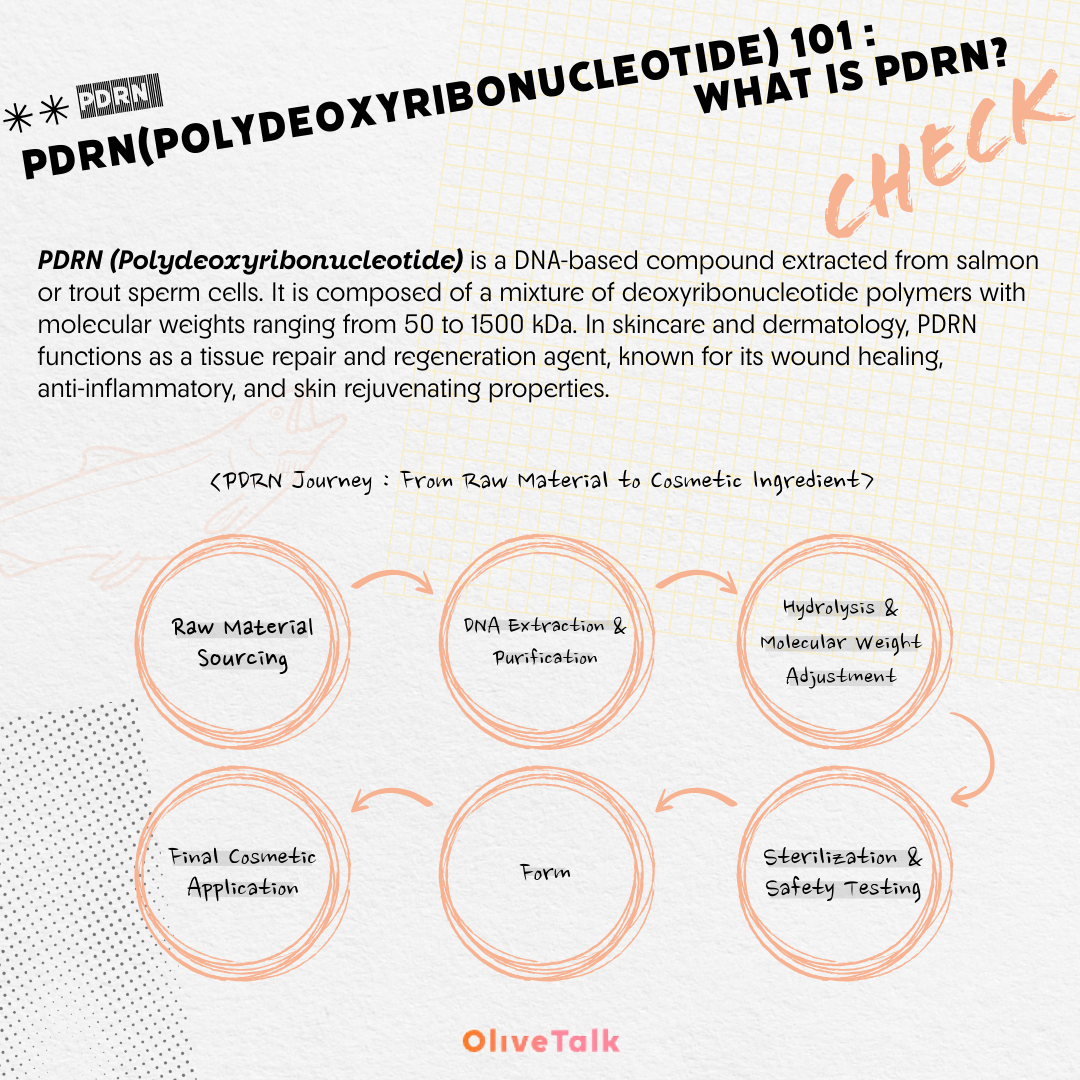
🧬 PDRN Journey: From Raw Material to Cosmetic Ingredient
1️⃣ Raw Material Sourcing
Primary source: Salmon (Oncorhynchus mykiss) or trout sperm cells
Why? These cells are rich in high-purity DNA, making them ideal for industrial PDRN extraction
Harvested from certified aquaculture facilities (GMP, HACCP-compliant)
2️⃣ DNA Extraction & Purification
DNA is isolated from sperm cells through enzymatic or mechanical disruption
Unwanted substances such as proteins, lipids, RNA, and heavy metals are removed
Result: High molecular weight, pharmaceutical-grade DNA
3️⃣ Hydrolysis & Molecular Weight Adjustment
Extracted DNA is enzymatically or chemically hydrolyzed to achieve optimal size (50–1500 kDa)
This ensures better bioavailability and dermal absorption
Enzymes like DNase or controlled pH environments are commonly used
4️⃣ Sterilization & Safety Testing
The solution is sterilized via autoclaving or microfiltration
Comprehensive quality control includes:
Endotoxin levels
Microbial testing
Heavy metal screening
All processed under cosmetic-grade (ISO 22716) or pharmaceutical-grade standards
5️⃣ Formulation-Ready Processing
Converted into water-soluble liquid or lyophilized powder
Stabilized for cosmetic use by adjusting pH, solubility, and preservative systems
Designed for easy blending into serums, creams, and masks
6️⃣ Final Cosmetic Application
Used in:
Ampoules
Sheet masks
Barrier repair creams
Post-procedure treatments (e.g., microneedling solutions)
Primary benefits:
Skin regeneration
Anti-inflammation
Post-laser recovery
Notable products: Rejuran®, Celonia DNA Shot, Dr. Pepti
🌿 Origins of PDRN in Skincare
PDRN was first developed as a therapeutic agent in the early 2000s and was clinically approved in countries like South Korea and Italy. Its transition to skincare emerged after studies showed its ability to
- Stimulate fibroblast proliferation
- Enhance angiogenesis (formation of new blood vessels)
- Boost collagen synthesis
These properties made PDRN a promising active in anti aging and post-procedure skin recovery formulas.
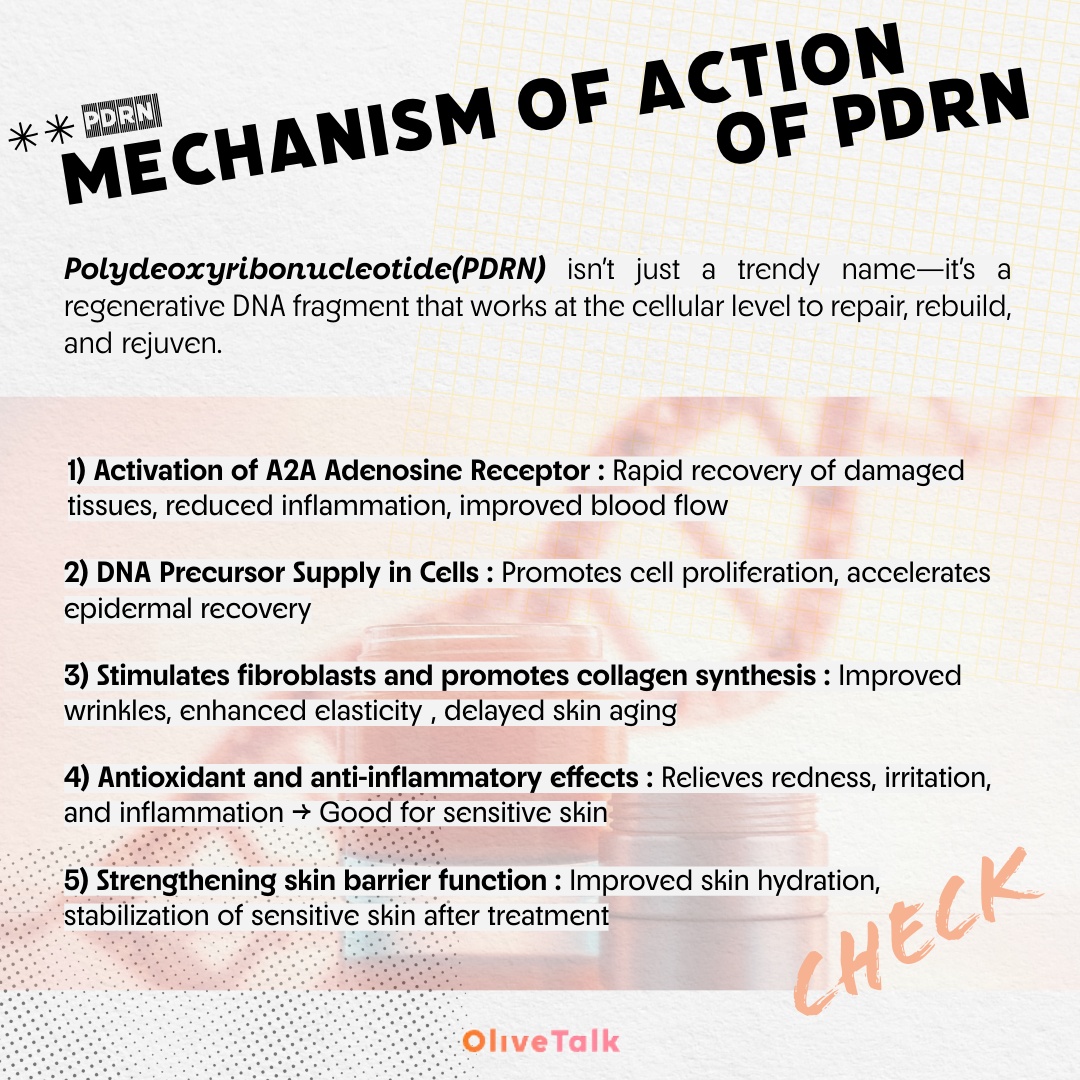
🔬 Mechanism of Action I (Cell Regeneration)
PDRN acts via the A2A adenosine receptor pathway, leading to
- Increased expression of vascular endothelial growth factor (VEGF)
- Accelerated wound healing and neovascularization
- Enhanced tissue remodeling
It serves as a nucleotide source for DNA synthesis, aiding damaged skin cells in faster recovery.
💡 Mechanism of Action II (Skin Benefits)
PDRN provides a multifaceted approach to skin regeneration
- Stimulates fibroblast activity
- Increases collagen and elastin production
- Reduces inflammatory cytokines
- Improves epidermal hydration
- Supports skin barrier repair
These benefits lead to visible improvements in skin elasticity, texture, tone, and wound healing.
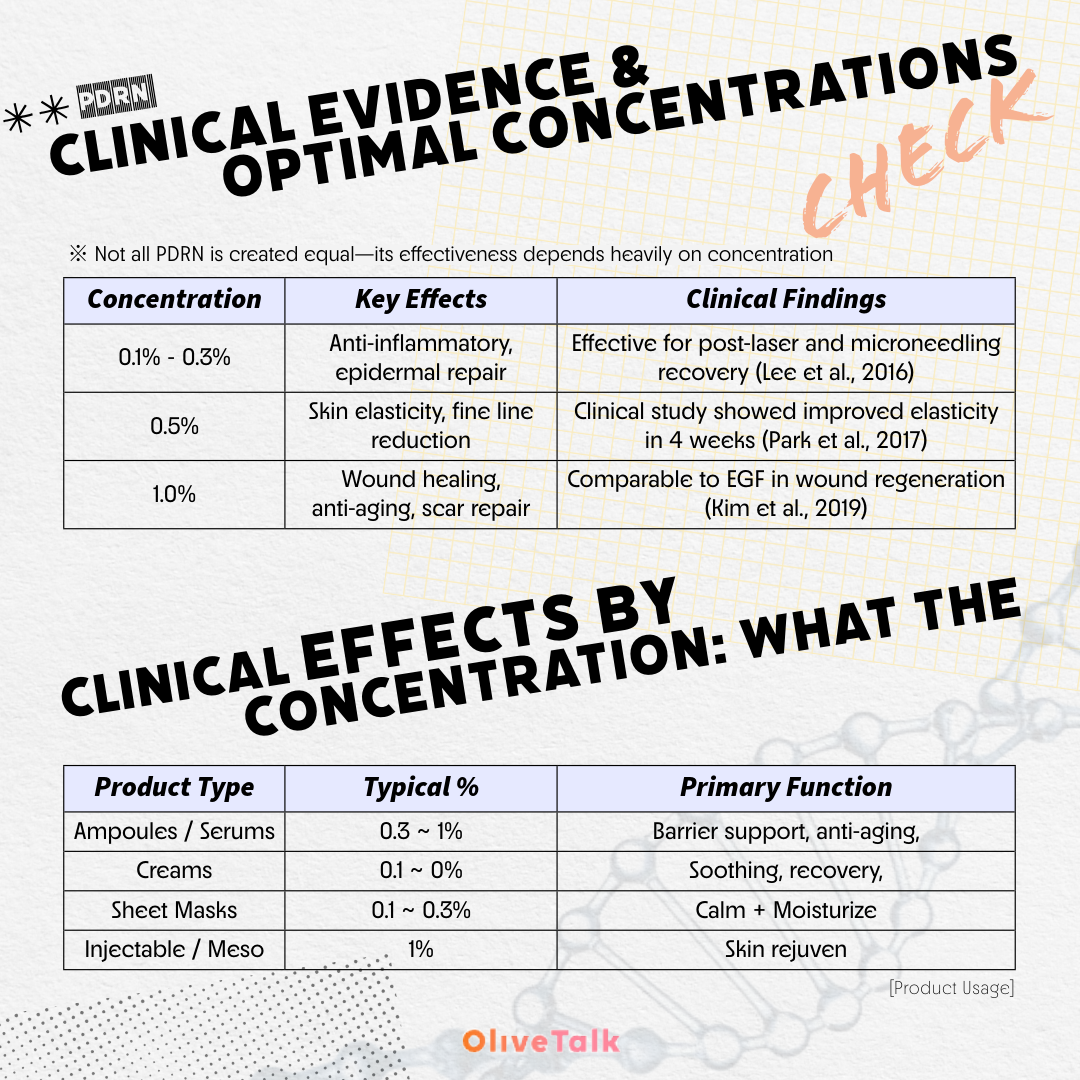
🧪 Clinical Evidence & Optimal Concentrations
(Concentration / Key Effects / Clinical Findings)
0.1% - 0.3% / Anti-inflammatory, epidermal repair / Effective for post-laser and microneedling recovery (Lee et al., 2016)
0.5% / Skin elasticity, fine line reduction / Clinical study showed improved elasticity in 4 weeks (Park et al., 2017)
1.0% / Wound healing, anti-aging, scar repair / Comparable to EGF in wound regeneration (Kim et al., 2019)
🔹 PDRN is most effective when used consistently and in conjunction with procedures like lasers or microneedling.
<📌 Summary of clinical evidence for each concentration>
🔹 0.1
Subject : Post-treatment recovery period, sensitive skin
Clinical results :
Skin moisture +24% (2 weeks)
Reduces redness and improves irritation response
TEWL (water loss) reduced by 15%
🔹 0.
Subject : Early aging, loss of elasticity, fine wrinkles
Clinical results :
18.2% improvement in skin elasticity (4 weeks)
Reduces pore size (10%)
Collagen
🔹 1.0% PDRN
Subject : Pigmentation, scars, highly damaged skin
Clinical Results :
Wound healing speed doubled (vs. control group)
Reduce pigmentation, increase skin thickness
Shows similar effects to EGF
🔹 2.0%+ (for injection and meso)
Target : For those in dire need of skin regeneration (acne scars, deep wrinkles, post-laser treatment)
Clinical Results :
Increased cell density within the dermis
Increased expression of VEGF and TGF-β1 → Promotes blood vessel formation and regeneration
Skin tissue reconstruction (histological confirmation)
🍉 Product Formats & Typical Percentages
(Product Type / Typical % Range / Target Benefits)
Ampoules/Serums / 0.3–1.0% / Skin regeneration, elasticity boost
Repair Creams / 0.1–0.5% / Barrier repair, post-procedure recovery
Sheet Masks / 0.1–0.3% / Hydration + anti-inflammatory benefits
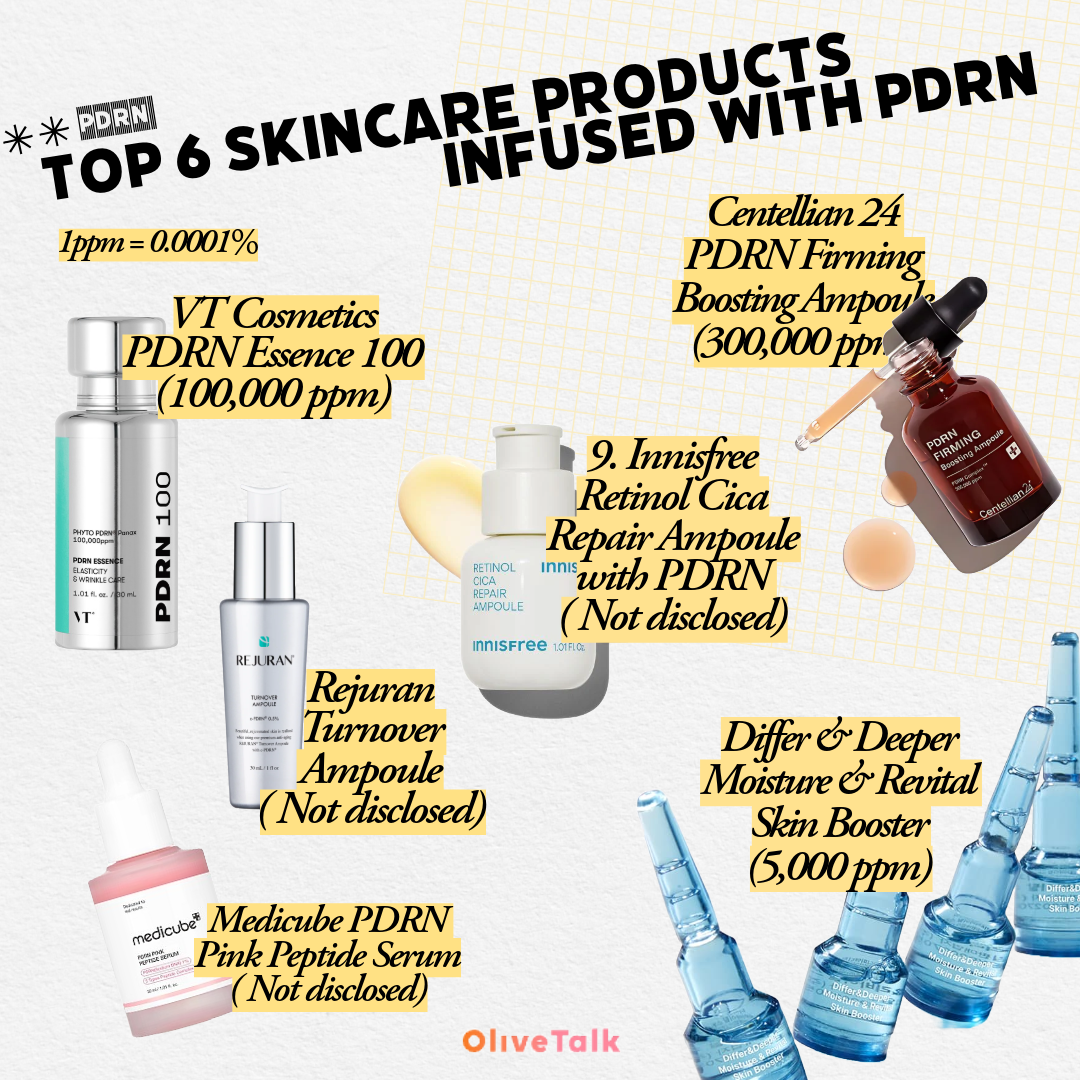
<Top 6 Skincare Products Infused with PDRN>
1. VT Cosmetics PDRN Essence 100
PDRN Content: 100,000 ppm
Why it’s great: A K-beauty favorite, this serum uses wild ginseng-derived PDRN to promote firmness, clarity, and resilience.
Country: South Korea
2. Centellian 24 PDRN Firming Boosting Ampoule
PDRN Content: 300,000 ppm
Why it’s great: Packed with high-potency salmon DNA extract, this ampoule delivers visible lifting and collagen-stimulating benefits.
Country: South Korea
3. Differ & Deeper Moisture & Revital Skin Booster
PDRN Content: 5,000 ppm
Why it’s great: A non-invasive alternative to Rejuran injections, this ampoule revitalizes and plumps stressed, dull skin.
Country: South Korea
4. Medicube PDRN Pink Peptide Serum
PDRN Content: Not disclosed
Why it’s great: Infused with PDRN, collagen, and hyaluronic acid, this serum smooths fine lines and boosts elasticity.
Country: South Korea
5. Rejuran Turnover Ampoule
PDRN Content: Not disclosed
Why it’s great: From the original innovators of injectable PDRN (Rejuran Healer), this serum supports skin renewal and anti-aging at a cellular level.
Country: South Korea
6. Innisfree Retinol Cica Repair Ampoule with PDRN
PDRN Content: Not disclosed
Why it’s great: Combines gentle retinol, green tea-derived antioxidants, and PDRN to soothe, brighten, and strengthen compromised skin.
Country: South Korea
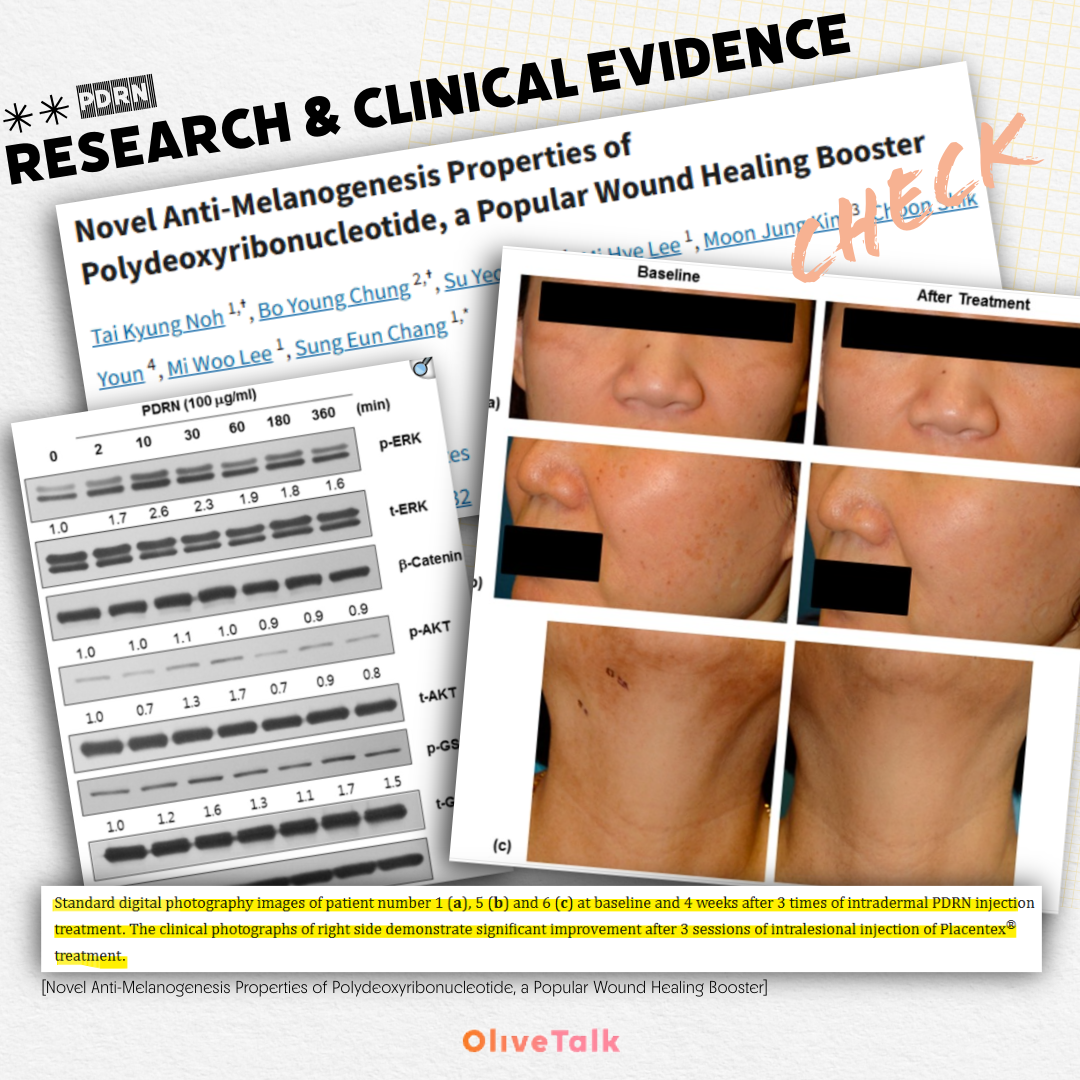
🏃♂️ Historical Note: Medical to Cosmetic
PDRN was initially patented and commercialized as a wound-healing agent for ulcers, burns, and surgical recovery. Its transition to aesthetics began when dermatologists observed marked improvements in skin texture, firmness, and radiance after PDRN-based injections.
Today, it's commonly used in injectables (skin boosters), mesotherapy, and topical skincare, particularly in Asia and Europe.
💾 Final Thoughts from a Skincare Expert
PDRN is more than a trend; it’s a biologically active regenerative powerhouse.
Whether you're dealing with post-procedure sensitivity or seeking anti-aging benefits, PDRN offers a potent, clinically supported solution.
Its safety profile and multi-pathway mechanisms make it an ideal ingredient for both medical and cosmetic applications.
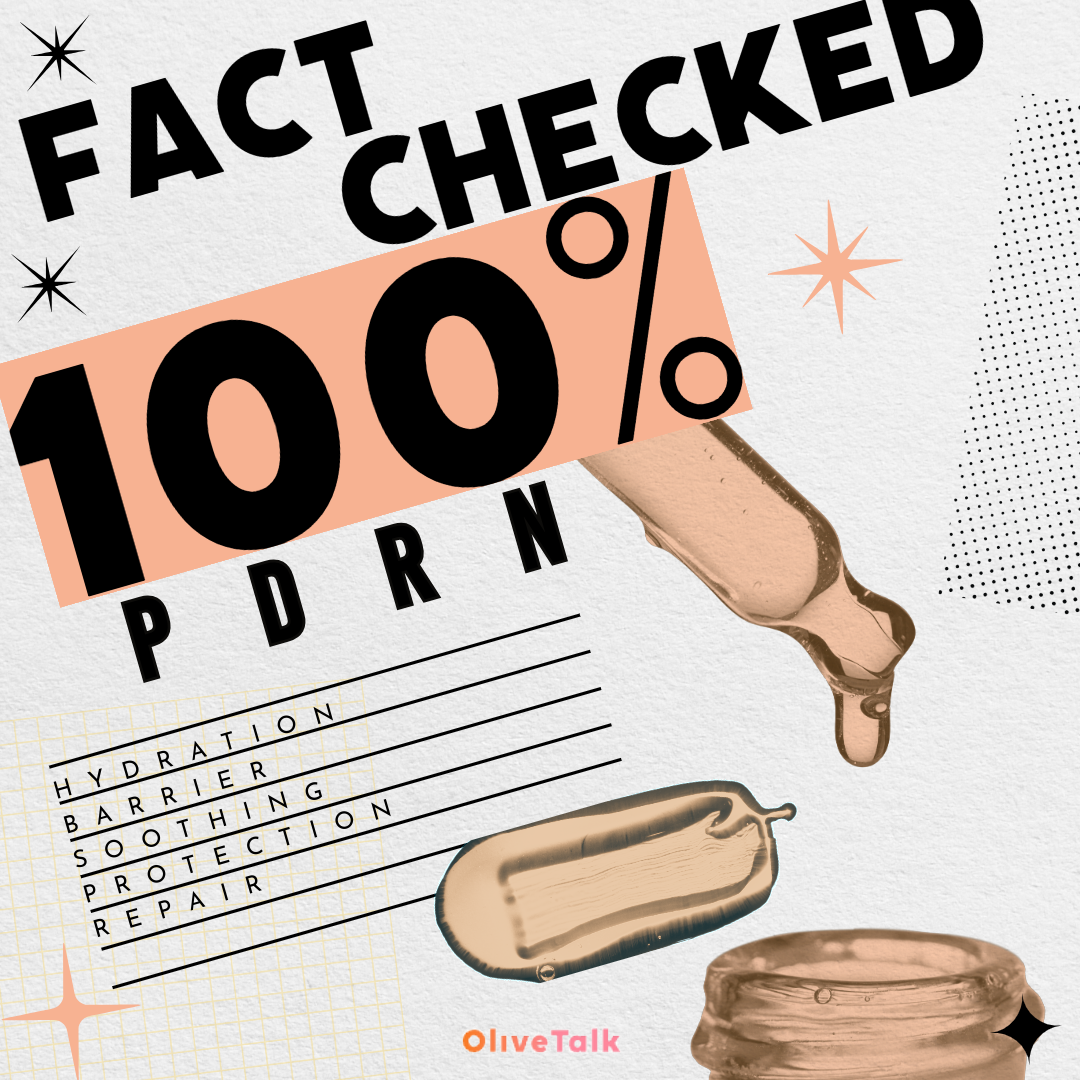
📑 References
Lee, Y. et al. (2016). The effect of polydeoxyribon Journal of Cosmetic
Park, S. et al. (2017). Efficacy of PDRN-based cosmeceuticals on facial Dermatologic Therapy, 30(5),
Kim, D. H. et al. (2019). Comparison of PDRN and EGF in wound International Journal of Molecular Sciences,
Pescosolido, N. et al. (2012). The use of PDRN in tissue repair European Review for Medical and Pharmacological Sciences
Jeong, H. S. et al. (2016). Novel anti-melanogenesis properties of polydeoxyribonucleotide in a co-culture model of human melanocytes and keratinocytes. International Journal of Molecular Sciences, 17(9), 1470.
Lee, H. J. et al. (2022). A mixture of topical polydeoxyribonucleotide, vitamin C, and niacinamide improves skin pigmentation and elasticity by modulating Nrf2 pathway. International Journal of Molecular Sciences, 23(3), 1426.
Cervelli, V. et al. (2010). The role of polydeoxyribonucleotide in cosmetic dermatology: a review. Journal of Plastic Dermatology, 6(1), 23–28.
 20Comments
20Comments
with plant based PDRN - their mask and essence, which are all I know. So I'd look up their website!
How does it compare to growth factors like EGF?
Any concerns about triggering inflammation?
What concentration is actually effective?